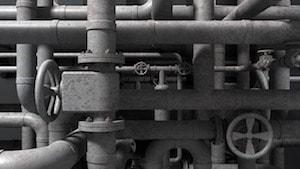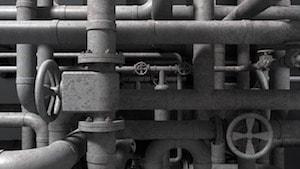Proper Valve Labeling and Identification Tips: Labeling the Right Parts, Understanding Labeling Standards, Valve Tags, and More


Improving a facility’s safety and efficiency often is as simple as using proper valve labeling and identification practices. Even though valves may not be a main component of heavy machinery, they can do quite a bit of damage if someone opens the wrong valve. The other benefit of using the appropriate valve labeling and identification practices are significant reductions in the risk of spills, accidents, and injuries caused by the valves and pipes in a facility.
If you want to improve the safety of your facility by adding valve labels for the first time, or if you are looking to improve your valve labeling and identification processes, there are a few standards and practices you should follow including
Read on to learn more about the proper valve labeling and identification processes, standards, and practices.
Valve labeling and identification can be quite an undertaking because there may be hundreds of control valves and thousands of manual valves within  a facility or refinery. The challenge is to properly label and identify growing numbers of valves that require repair, maintenance, and validation. Not only do facilities and refineries have several types of valves such as solenoid, gate, plug, butterfly, pinch, diaphragm, ball, and globe, but they also have valves that require identification on several different parts including the body of the valve, bottom of the valve, and underside of the valve.
a facility or refinery. The challenge is to properly label and identify growing numbers of valves that require repair, maintenance, and validation. Not only do facilities and refineries have several types of valves such as solenoid, gate, plug, butterfly, pinch, diaphragm, ball, and globe, but they also have valves that require identification on several different parts including the body of the valve, bottom of the valve, and underside of the valve.
When determining which parts of the valve need to be labeled, keep in mind that the objective of the tags and labels is to ensure safe operation. All tags and labels should be placed in locations that are visible to everyone. As such, you should not place tags or labels on valve handles or wheels. The Department of Energy clearly states that labels for valve components “should be permanently attached to the components (e.g., attached to the valve yoke, not to a removable part such as a handwheel) in a way that will not interfere with the normal operational use or testing of the component. Valves operated by reach rods or chains, or other remotely operated components, should have an additional label installed at the operating device. Labels for chain operators should be attached to a small piece of tubing through which the chain passes, so the label always remains at the bottom of the chain loop. If the valve is difficult to be seen from the operating location, the label should indicate the open and close direction for the chain or other operator.”
Image via Pixabay by Tama66
Unfortunately, the American Society of Mechanical Engineers (ASME) and the American National Standards Institute (ANSI) do not explicitly require valve tag placement. However, they do have codes requiring proper marking of piping systems, and those codes typically apply to valves because valves are part of piping systems. As such, valve tags use the ANSI/ASME A13.1 standard for color coding (a pipe labeling standard followed in the industry for valve labeling purposes due to the lack of a separate standard for valve labeling). The tags must identify the valve and usually do so by including the valve number. The tag also typically identifies the valve type and system of which the valve is a part. It’s important to note that the type of valve specified is dependent upon its function rather than on the design of the valve. Additionally, valves such as ball and gate valves are described according to their design and usually are not specified on the valve tags.
The ANSI/ASME A13.1 color code includes six standard colors and four user-defined colors. The six predefined colors identify types of pipe contents, and the standards provide definitions to help facilities use the  correct colors. The user-defined colors, on the other hand, are defined by individual facilities using the standard, and the facilities must document the definitions and train workers. The color code is as follows
correct colors. The user-defined colors, on the other hand, are defined by individual facilities using the standard, and the facilities must document the definitions and train workers. The color code is as follows
There are some points of confusion that arise from the ANSI/ASME A13.1 color code. First, facilities question the difference between flammable and combustible. According to the standard, if the material is a vapor or produces a vapor that could ignite and burn in air, it is flammable. Other materials that could pose a fire hazard fall into the combustible category.
Sometimes facilities question how to label pipes and vales that fall into multiple categories, as is the case then flammable gases also are toxic. Generally, each facility makes the decision. Some facilities identify the hazard type that is more significant to them specifically and use the color for that particular hazard; other facilities use a user-defined color to identify combinations of hazards.
Image via Pixabay by Amigos3D
Label and tag placement on pipes and valves is critical to facility safety. Facilities typically follow four general rules about placing pipe labels and valve tags; these rules follow recommendations from ANSI.
It is best to place valve tags in locations where workers will clearly see the pipe contents and valve information prior to opening the valve itself. It is important never to attach valves to valve stems or actuators. In many cases, tags are attached to valves using plastic or metal ties.
Valve tags can be made of a variety of materials including plastic, metal, wood, or paper. Metal valve tags are popular because of their durability. They are available in a variety of metal types including stainless steel,  aluminum, and brass. Stainless steel tags are ideal for environments that include water and chemicals because they resist rusting and corroding. Aluminum tags are light weight and capable of being engraved. They are a good choice for environments that have low temperatures; however, they are not as strong in extremely hot environments. Brass tags are strong and may be used in high-temperature situations and environments that are corrosive.
aluminum, and brass. Stainless steel tags are ideal for environments that include water and chemicals because they resist rusting and corroding. Aluminum tags are light weight and capable of being engraved. They are a good choice for environments that have low temperatures; however, they are not as strong in extremely hot environments. Brass tags are strong and may be used in high-temperature situations and environments that are corrosive.
Tags also vary in size from small circles to large squares, depending on the amount of information they need to contain. Of course, facilities need to select the proper type of tag for the valve environment in which it will be placed. Thus, safety managers often use multiple types of tags throughout their facilities. They also often choose tags that follow the pipe color schemes to have a consistent labeling system that visually communicates information to workers.
There are many considerations to make when labeling and identifying valves and pipes in a facility. Safety manager should determine which parts of the valve need to be labeled, know and understand valve labeling standards including ANSI/ASME A13.1, utilize proper valve tag placement, and use the proper type of valve tags throughout their facility.
Image via Flickr by PEO, Assembled Chemical Weapons Alternatives
Our sales engineers are experts in automatic asset tracking, tagging and identification,a nd can answer all your questions. Get in touch now.
Lets Talk ›